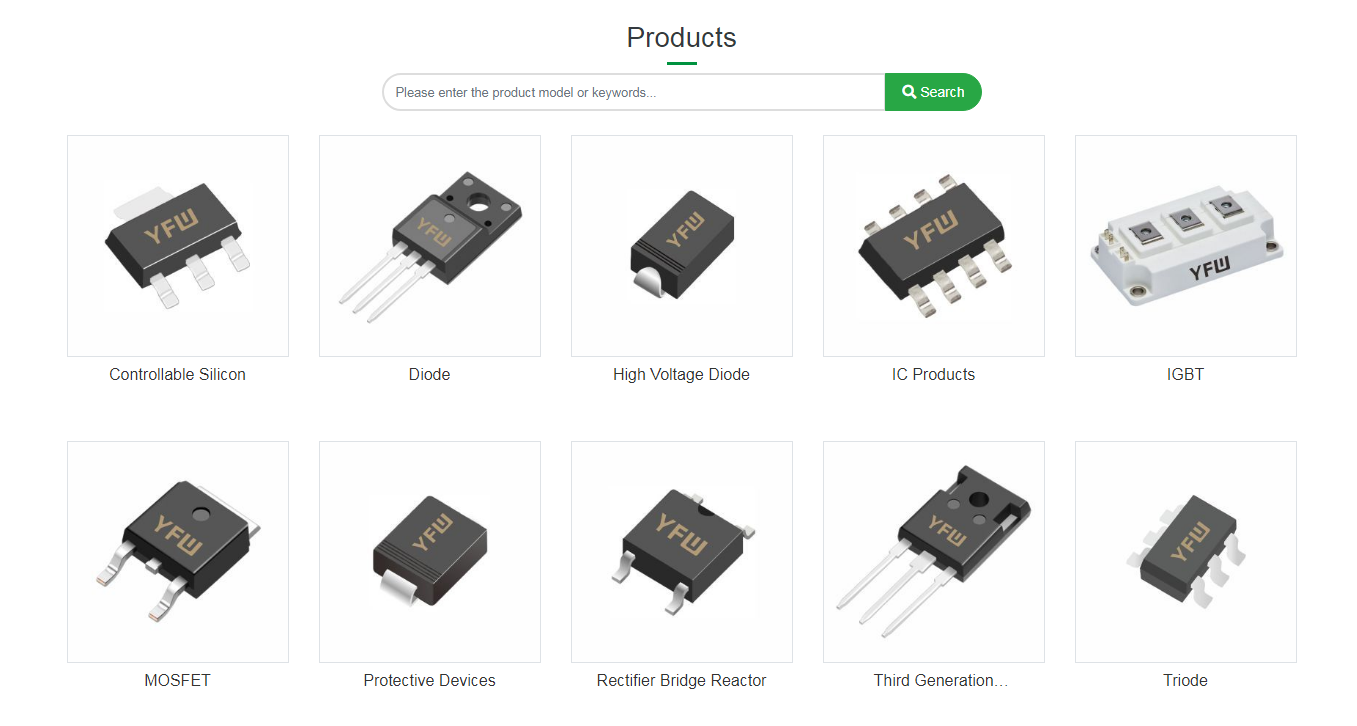Date:2025-03-18 Categories:Industry News Hits:935 From:Guangdong Youfeng Microelectronics Co., Ltd(YFW)
A relay is an electronic device that is primarily used to control larger currents or voltages by inputting smaller currents or voltages into a circuit. This device mainly consists of an elect coil, a switch, and a spring. When current flows through the coil, it generates a magnetic field, which attracts the switch, causing it to close. In this way, larger current or voltage can flow through the switch. When the current stops flowing, the spring will push the switch back to its original position, breaking the circuit. Firstly,'s understand the working principle of the flyback diode. When the relay is opened, the current in the inductive component will generate magnetic field energy. When the switch is opened the current in the inductive component will instantly decrease, and the magnetic field energy needs to be released. In this process, a reverse voltage, also known as the self-induced voltage will be generated between the two terminals of the inductive component. The flyback diode, also known as the freewheeling diode or the flywheel diode, an electronic component used to protect other parts of the circuit from the effects of reverse voltage spikes. When an inductive component (such as a relay) in a circuit is suddenly opened it can generate a reverse voltage spike. Without a flyback diode, this reverse voltage may damage other parts of the circuit. The flyback diode allows current to flow freely one direction, thus eliminating this reverse voltage and protecting the circuit. The role of the flyback diode is actually to transfer the energy generated in the relay to other circuits to damage. When the current in the inductive component decreases and generates a reverse voltage, the flyback diode conducts and releases this energy into other circuits through its own conduction. Since theback diode is reverse-polarized, it will only conduct under reverse voltage conditions and will not conduct during normal operation. Now let's discuss the main issue: Will theback diode circuit formed when the relay is opened damage the power supply? The answer is no. The flyback diode circuit is a closed local circuit, and its main is to provide a path for the induced current in the relay coil to be released. The current in this circuit is driven by the induced electromotive force generated inside the relay coil not by the power supply. Therefore, the current in the flyback circuit will not flow back to the power supply, and thus will not cause any damage to the power supply.In fact, using a flyback diode not only does not damage the power supply but is also a measure to protect the power supply. Because without a flyback diode, back-emf may generate some unpredictable high voltage pulses through the power line, which is a potential risk for the power supply and the entire circuit system. The flyback diode a safe path for release, avoiding this risk. In summary, the flyback diode circuit formed when the relay is opened is a very important and effective protective measure. It a closed local circuit to release the induced current inside the coil, thus avoiding arcing and voltage pulses caused by high back-emf, protecting the components in the circuit, the power supply. Therefore, using a flyback diode will not damage the power supply, but is actually a protection for the power supply

Previous:The working principle and main characteristics of photodiodes
Next:NZT560A 1A 80V SOT-223 Marked NZT560A Small Signal Transistor Y Micro Brand